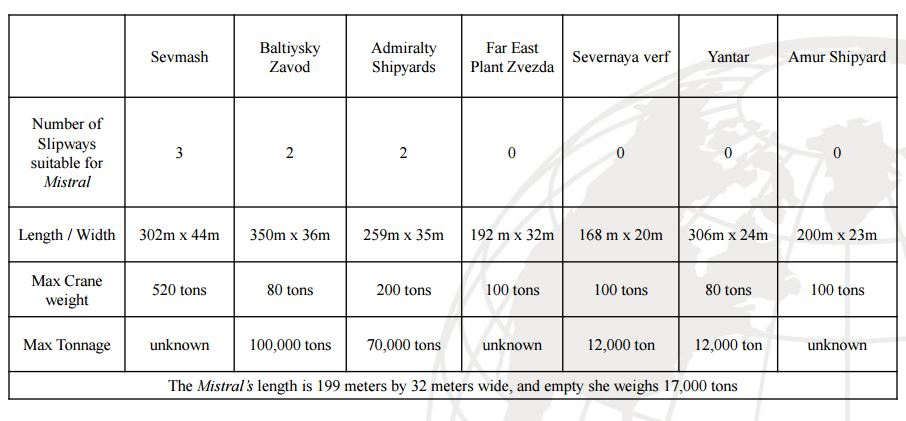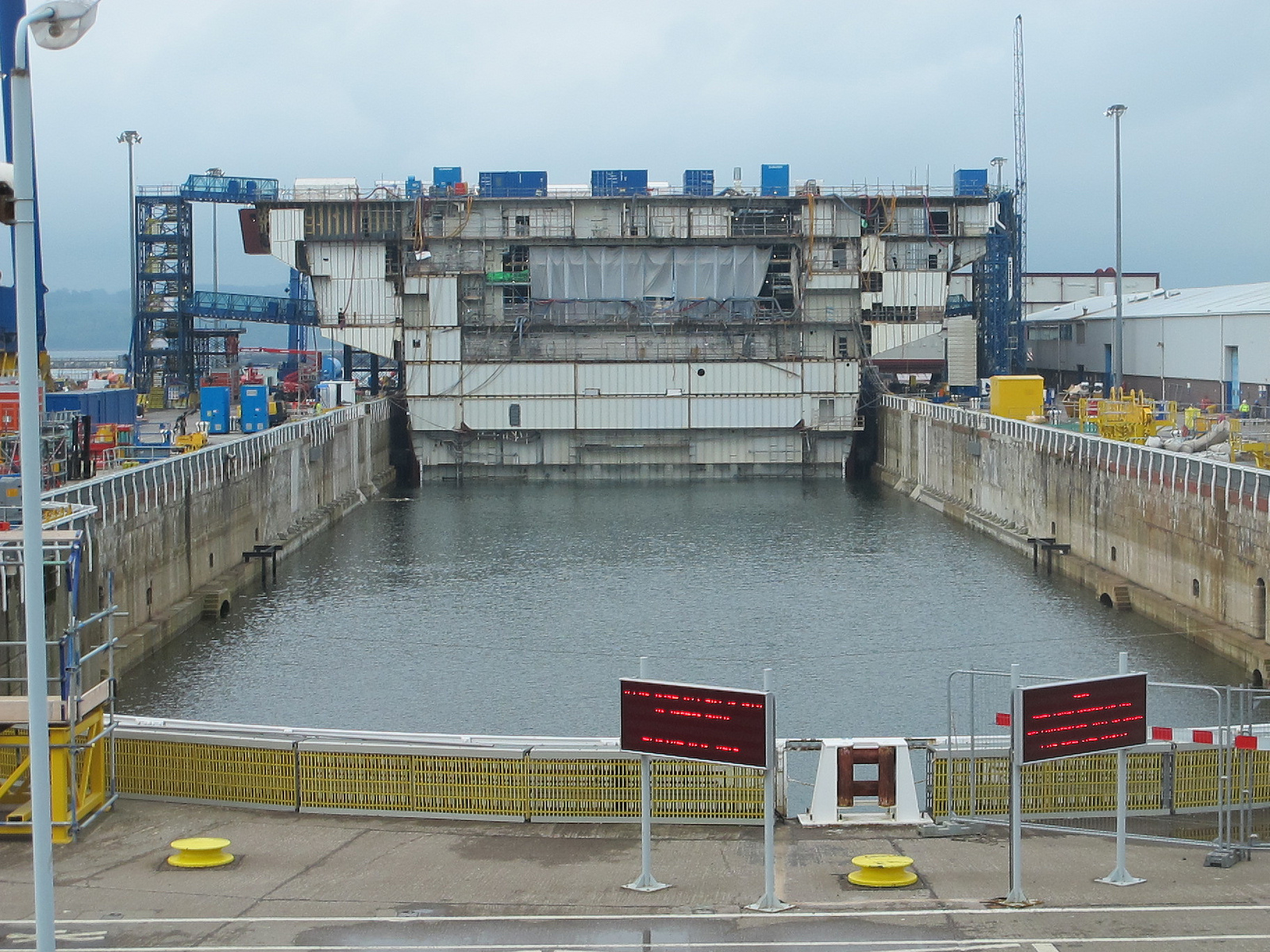And? Sevmash's work shows that they could not do it without severe delays and cost overruns.
So. Why would that make it any different from any other current Russian ship building programme?
WTF does Sevmash's work history have to do with Zvezda? Do you think Zvezda has the capacity to work on 360m long ships weighing 300K tons by accident?
It is pretty clear they want to build new carriers at Zvezda.
The PRC has more money to burn and shipyards which did not experience decay in the last decades.
I am not saying China can't build carriers, you are saying Russia can't... and I am disagreeing with you.
I think that you should stop beating around the bush.
Thinking about this rationally, if they want to operate in international waters they will need an air component... that does not come from magic beans... it comes from aircraft carriers.
They don't need 13 of them and they wont be 100K ton monstrosities like the US builds.
they might even be twin or triple hull catamaran types... who can say?
Russia has had other commitments in countries like Georgia and Tadjikistan in the last decades.
Nothing that has cost them a fraction of what the UK has paid to travel on Americas coat tails saving the world.
Mate, we are not talking about light carriers (<30,00 tonnes displacement).
No we are not... they have already mentioned sizes in the 60K to 80K range.
In fact with a naval PAK FA on board they could operate as both fighter and strike aircraft in one...
Then admirality shipyard would be the one to do it since they have the capacity to do upwards to 70,000DWT. Maybe it would take them long and expensive for first inital build for shipyard upgrades and training, but once done, its done. Rather buy it locally produced and expensive rather than paying someone else.
The first ship of any class of any size will always take longer as new problems present themselves. The fact that the propulsion (ie nuclear reactor) has been in development for some time, and likely new radar and sensors have already likely been development for upgrades to the Kirov class vessels and of course the majority of weapon systems have been standardised that development wont take more than a decade, so we are talking about a first vessel in the mid 2020s to be layed down and ready for testing by 2030. Work will be assisted by upgrades to the Kuznetsov with new modular systems developed for the new vessels... so like fitting new engines to Su-35 that can be adapted later to the PAK FA sort of stuff.
How realistic would a "stopgap" 2nd Kuznetsov be, does anyone know?
It would be better to start from scratch... a stop gap would take as long to build and upgrade as the current K would take to upgrade and would not be cheap either... it makes rather more sense to build new because no matter the design it will not be cheap to build and operate. A new design will have a new modular construction that will simplify upgrades over the life of the vessel and the vessels that come after it.
1) Steam turbines (no need for change even if N-propulsion is opted instead of the KVG-3D boilers)
2) Gear assembly (no need for change)
3) Propellers & shafts (no need for change)
A brand new vessel can get rid of the enormous heavy shafts and use propeller pods... it saves space and weight and allows vastly superior manouver capability and it means you can place the NPP anywhere you want on the ship...
The need gear assemblies when you have electric drive are greatly simplified.
Sevmash's work was supposed to be finished in 2008.
The Vikramaditya was delivered in 2013.
The conversion was supposed to cost 0,8 billion US-dollar.
In the end, India had to pay 2,35 billion US-dollar.
Is that supposed to be good work?
It was never supposed to cost 0.8 billion... the first number was 1.4 billion and included the air component. The cost increases and delays were largely because of negotiations taking too long and finding rather more internal components, wiring and piping needed replacement. BTW an extra 900 million is peanuts... 22 billion for 126 Rafales in comparison and there is no complaints from Indian fans... cost over run of 12 billion dollars for a brand new item that did not require modification...
BTW those Indian carriers are also not on budget or on time either...
Perhaps making carriers isn't so easy?
Well aware of that however you need production engineers with experience on spot to advise and overlook production and assembly, Russia atm got no such engineers to my knowledge, maybe some guys that worked on Uljanovsk class are still around but its quite possible they are old, retired or live in Ukraine. Also carrier is not comparable to any other type of ship at all, its complex beyond anything else that floats around.
So how can carriers exist if you can't build any if you have not built any before?
That is just stupid.
USS Ford carrier is modular as it gets with carriers and still i see some HUGE cranes working on it and moving its sections that are probably heavier even than 1000t, i am not saying it couldnt be done by welding smaller compartments on spot but this way its far more convinient.
A bit of reality... the US has plenty of super carriers and other large vessels... russia is not going to build 30 large carriers that require such facilities so there is no value in upgrading Sev for the one or two or three ships it might actually build that would require such a building capacity... that is just DUMB.
They are upgrading Zvezda with the help of the South Koreans to build large tankers and LNG carriers of very large physical sizes and weights, it makes rather more sense to build the one or two or three carriers they might want there in between commercial products.
Sure there is an issue with security and putting military systems, but I am sure they can deal with that.
If you look up a thread I posted a few years ago about the new shipyard it states that they will have the capacity to make large and very large vessels and the capacity to make military vessels too.
They make spaceships... another large carrier is not that big a deal.
The new drive for modular construction and modular design should make things rather easier, not harder.
Just look at their experience with the Sidewinder missile... they found out... when they captured the first examples that the IR seeker was no better than their own, and that the rocket motor was no better than their own... the two critical things they learned was the modular design... the AA-1 by comparison was a complex mish mash of parts and wires and bits and pieces... the sidewinder was totally modular... seeker at the front, guidance system behind then warhead and then front control surface servos, then rocket motor and rear fins... the other thing was the rolleron gyros were tiny compared with their own.
the design of the sidewinder was so simple they were able to copy it and put it into production faster than they could retrain their engineers designing AAMs to use the modular design principles, but once they got it they took it rather further than the US did... with SARH and IR guided Sidewinders in Soviet service, followed eventually by the ultimate modular missile... the R-27 which included several dozen different seeker heads, two motor options... resulting in an enormous number of combinations...
We have seen it with Armata... they are trying to move to state of the art in all areas... why would they settle for K2? There is no enormous rush. It is better to get it right than to get it right now and below par.














